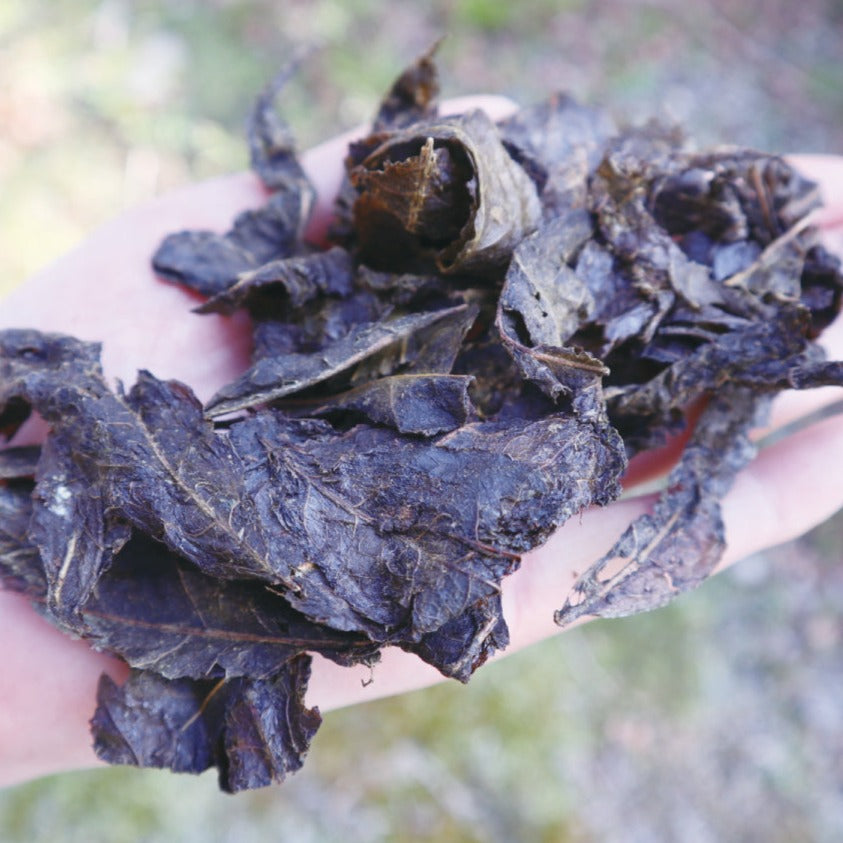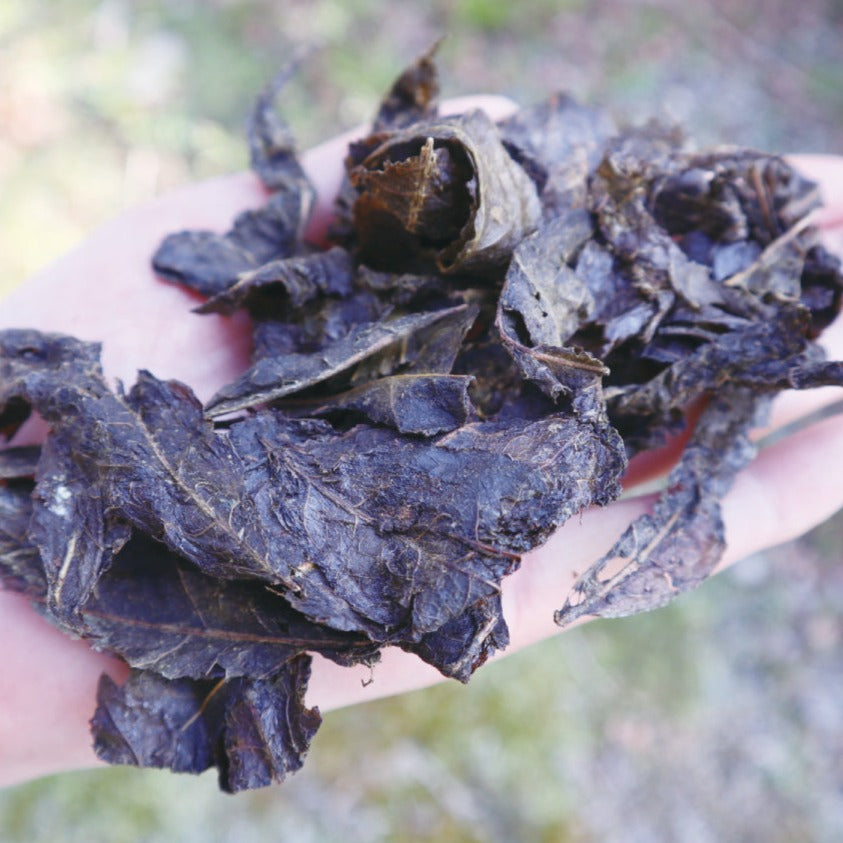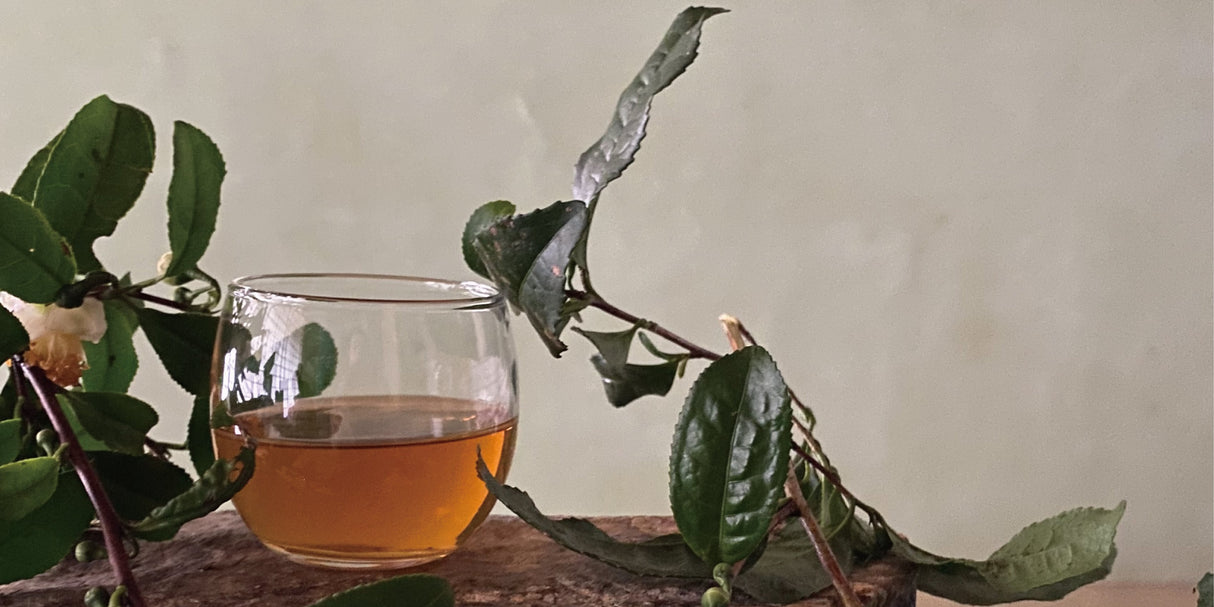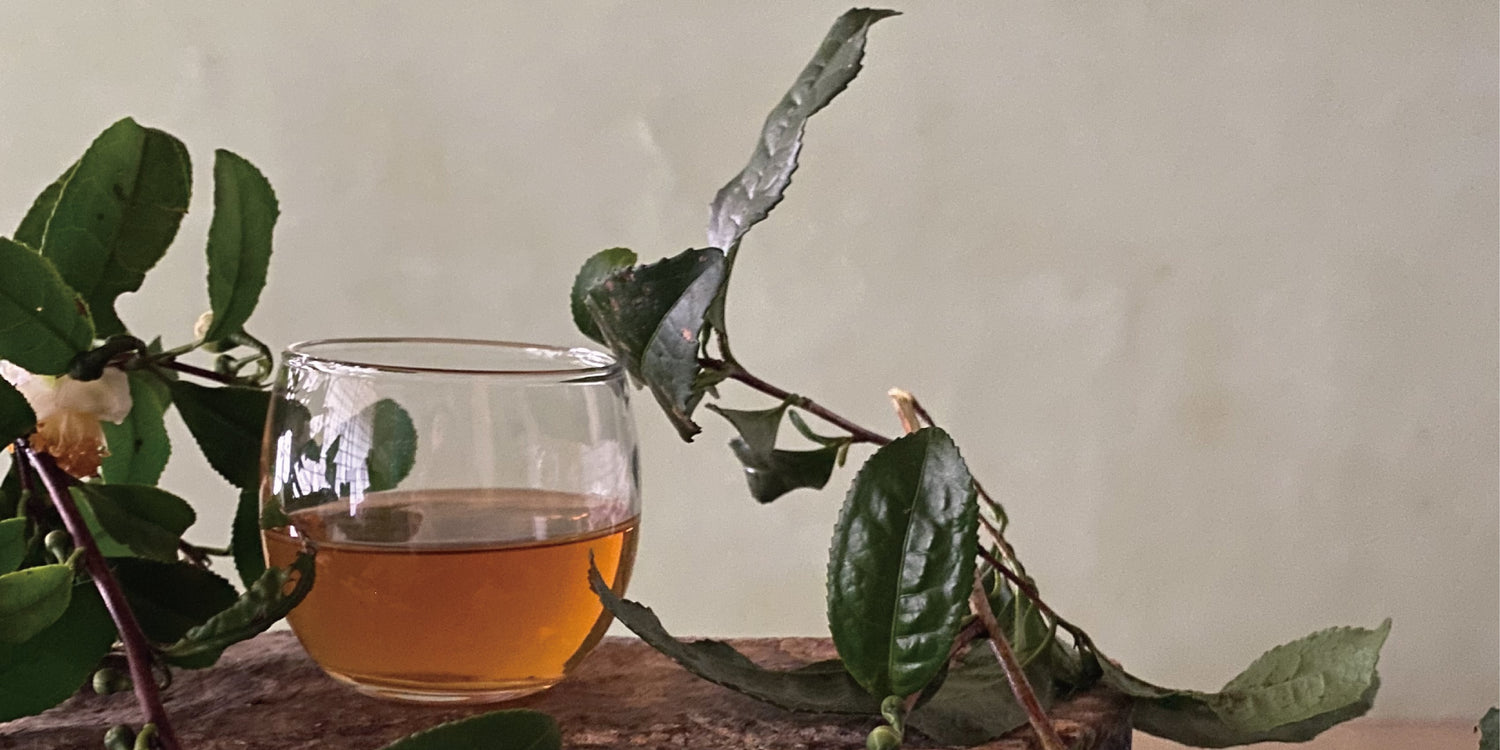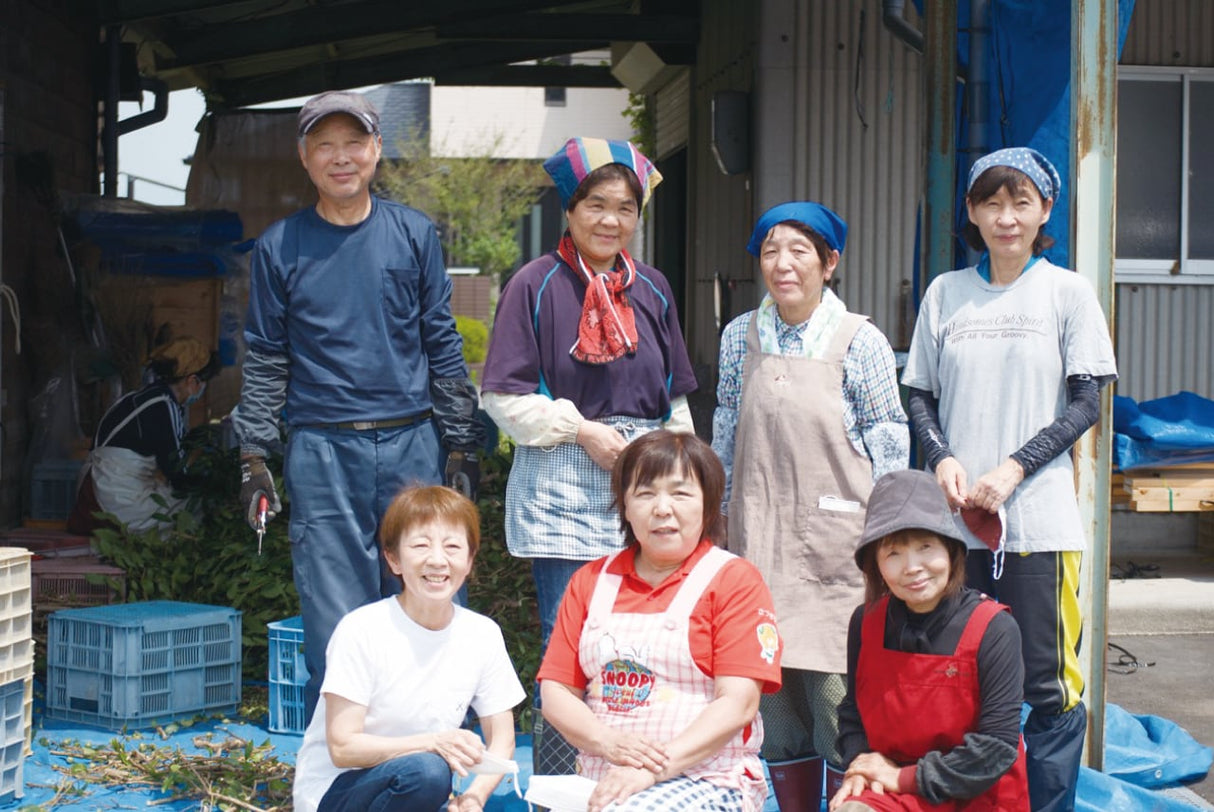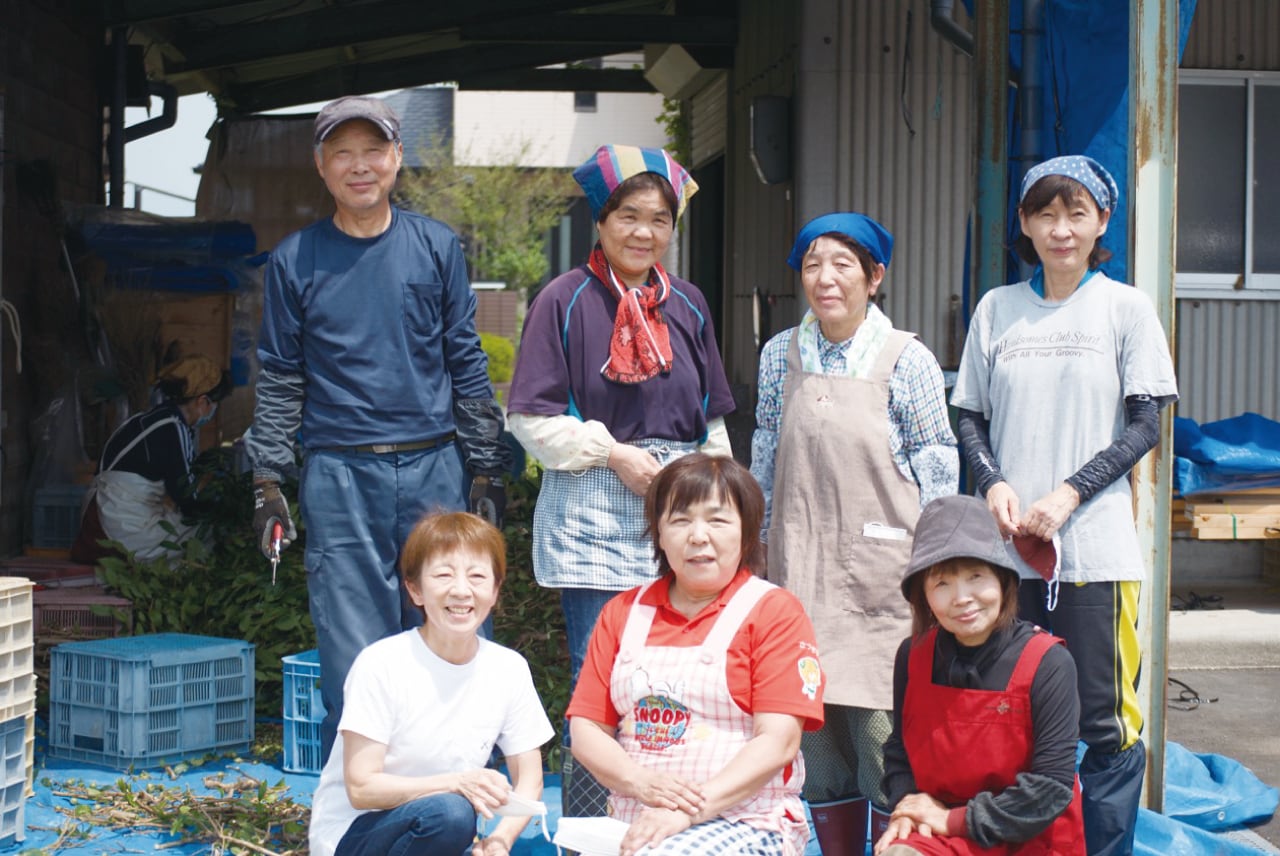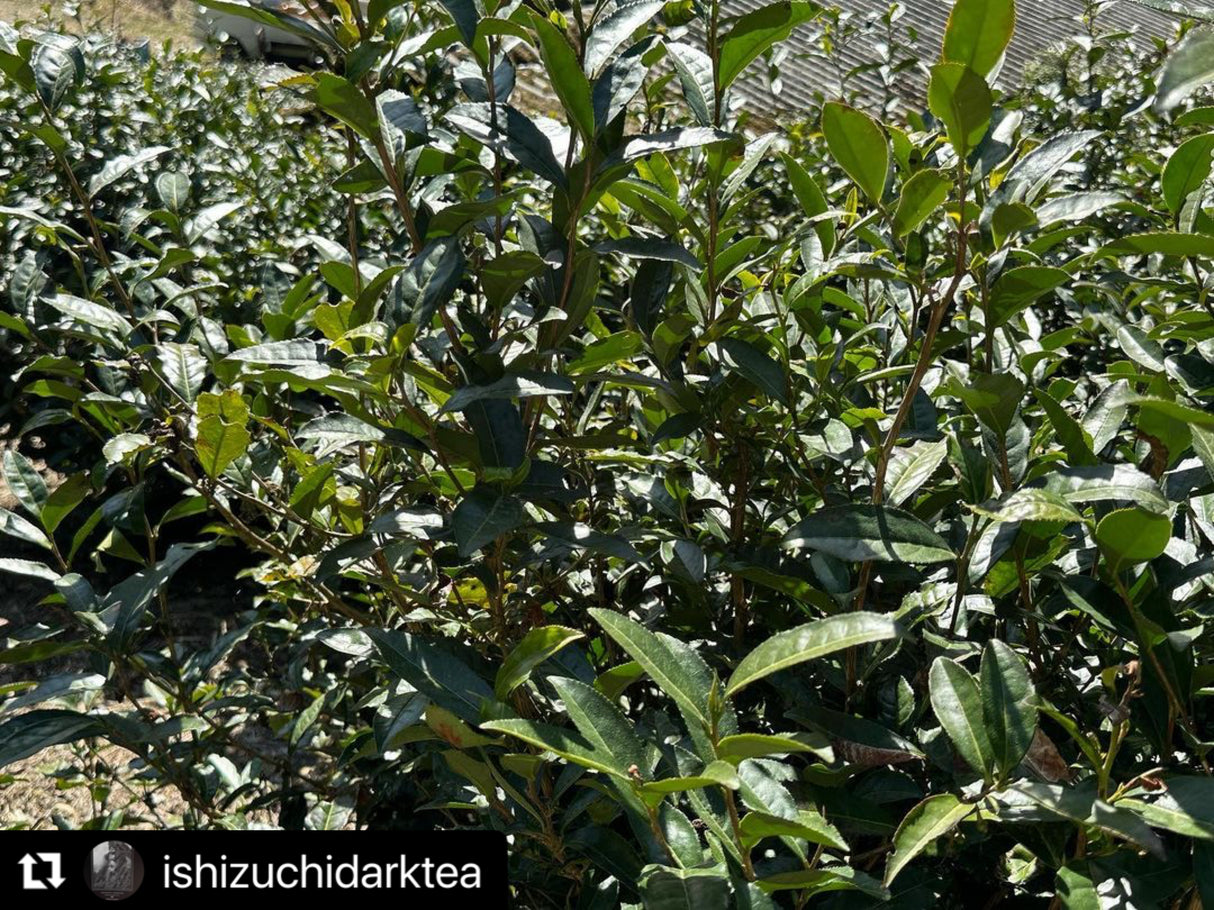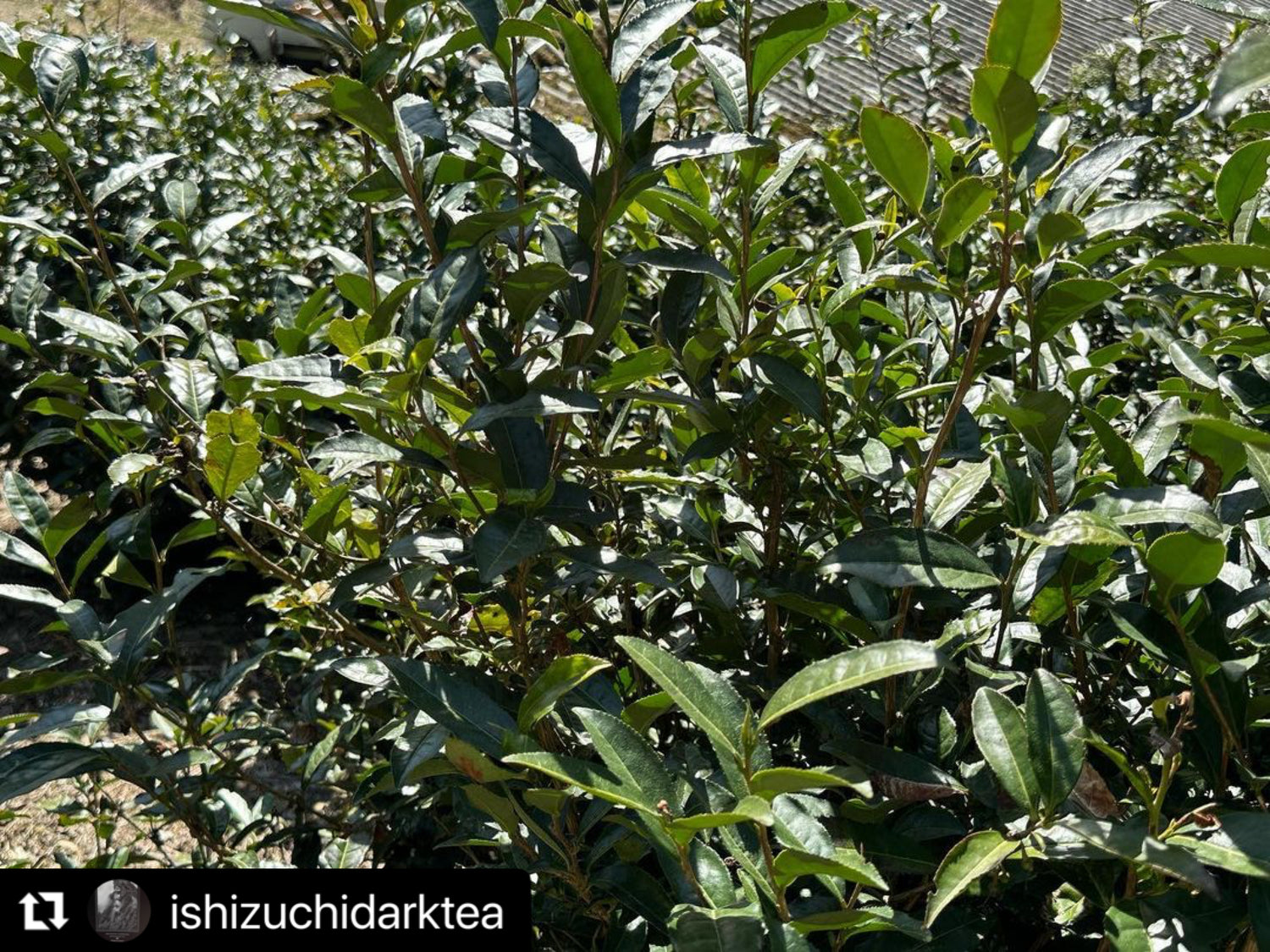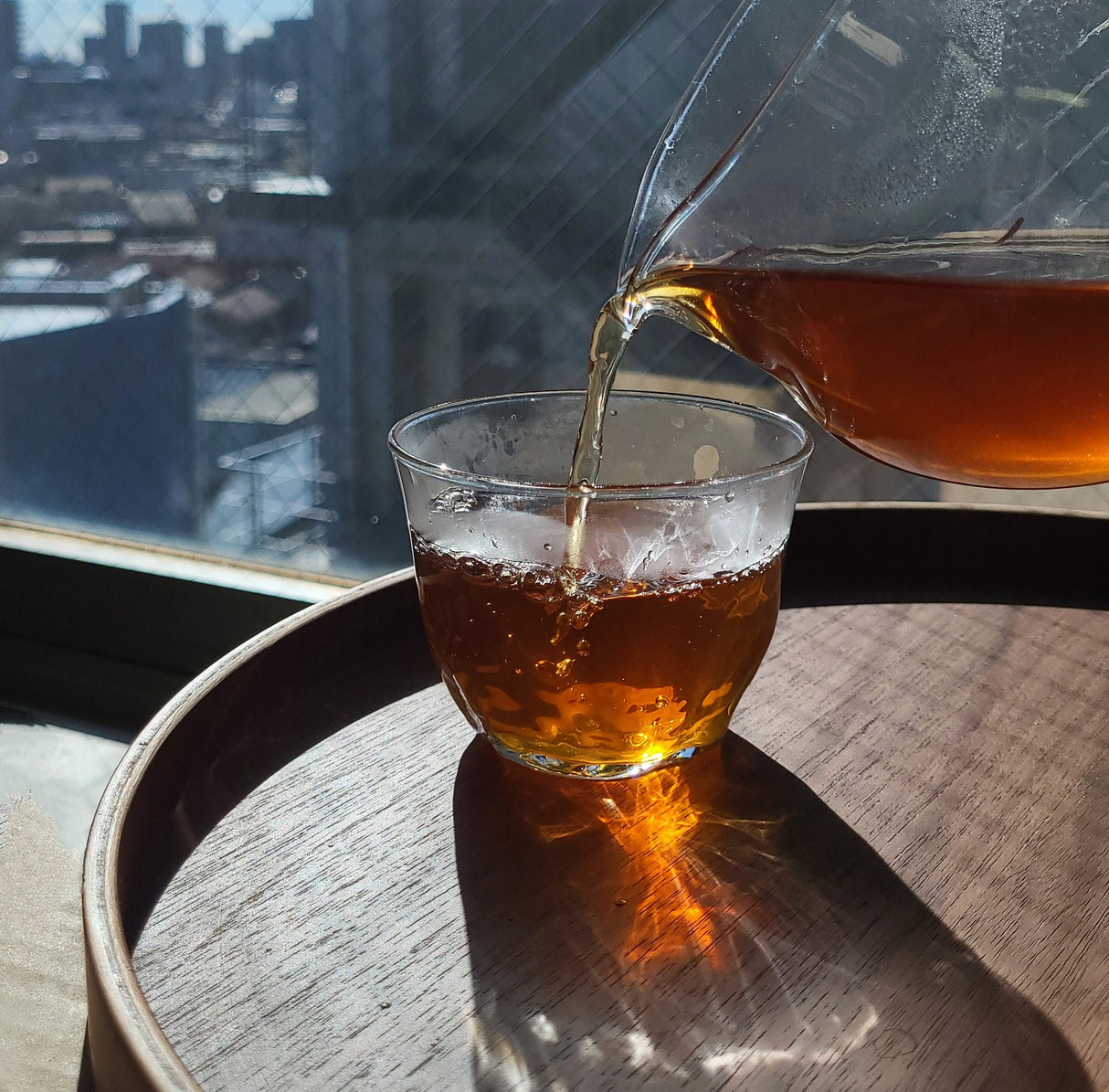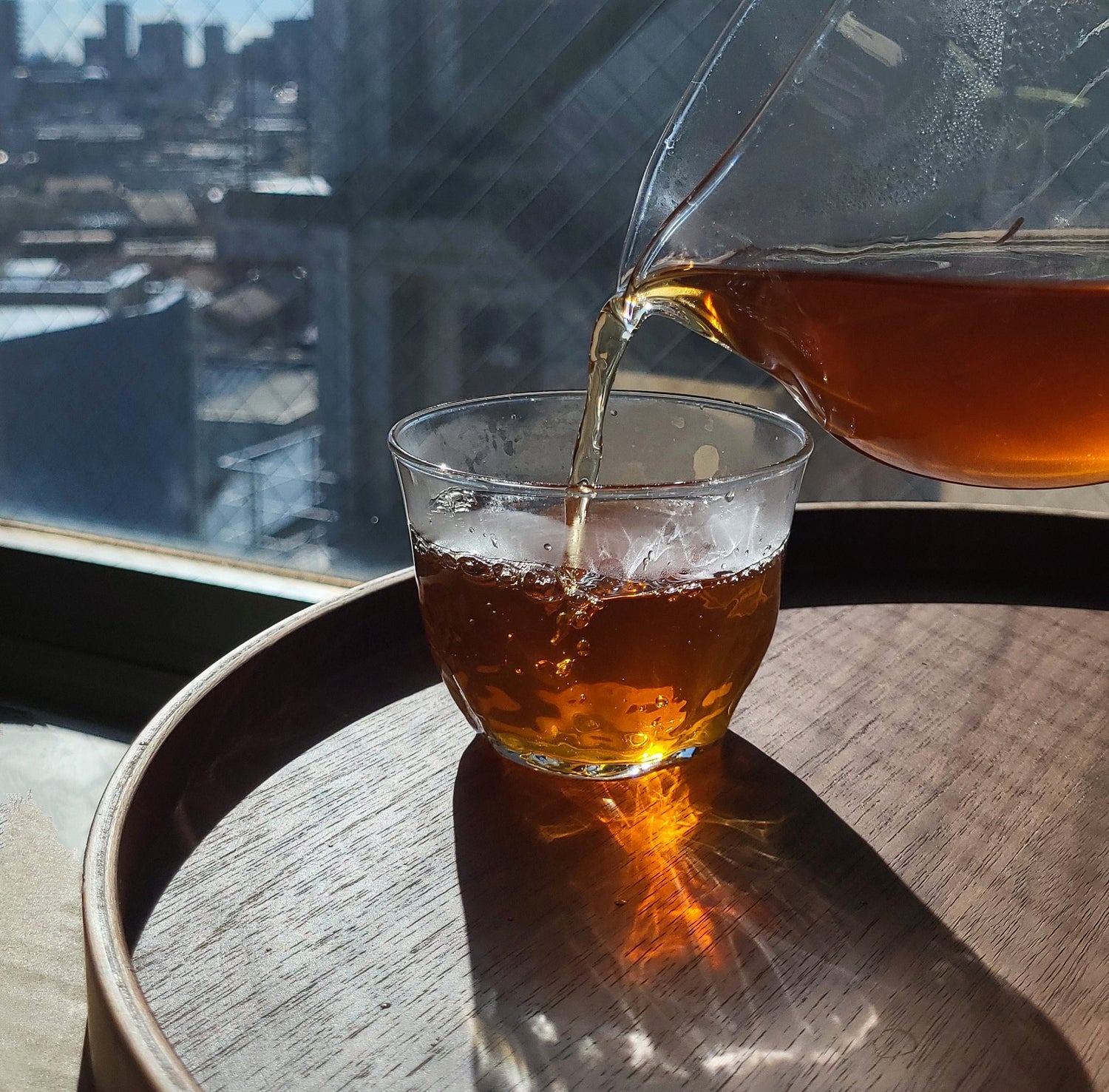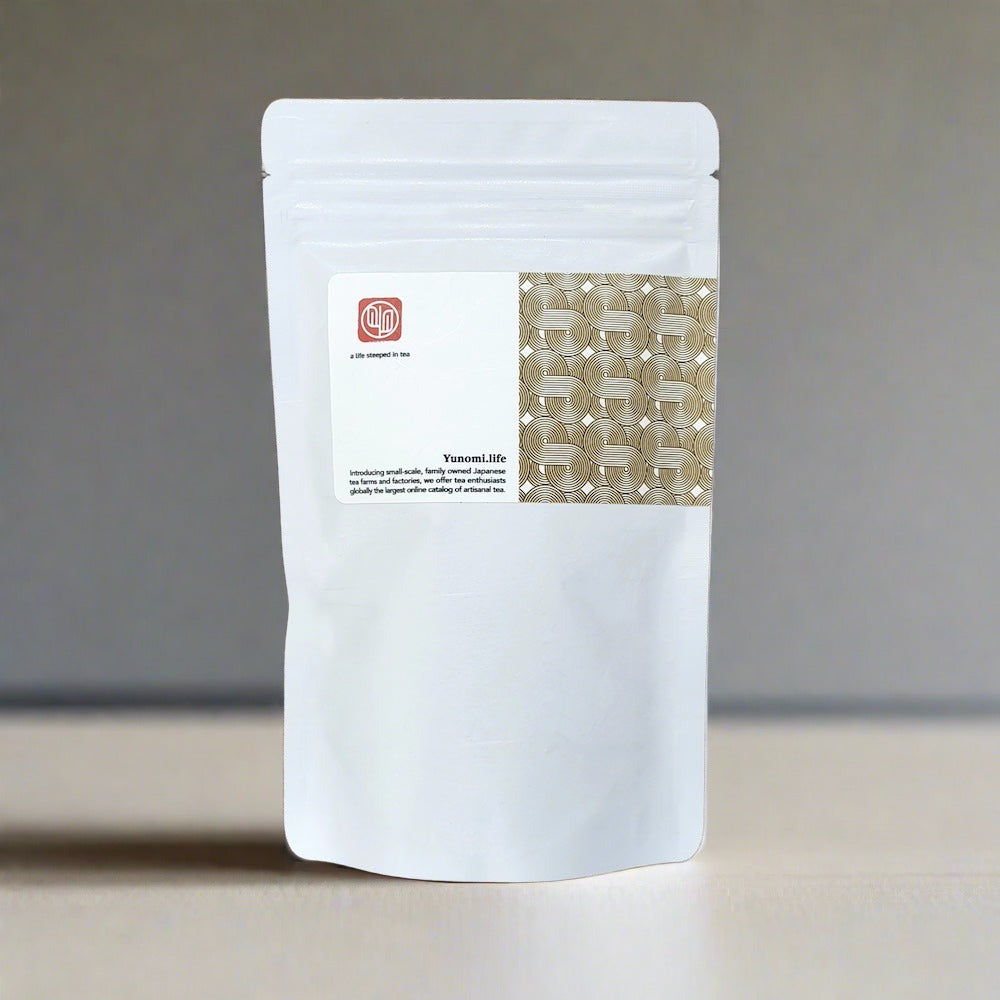#0601.E1 石鎚黒茶(3年以上熟成) - 愛媛県産発酵黒茶 - EH002
#0601.E1 石鎚黒茶(3年以上熟成) - 愛媛県産発酵黒茶 - EH002 - 100g / 3.5オンス 【在庫切れ】取り寄せ中につき、入荷次第発送します。大きいサイズを小さい袋に小分けするには1-2週間、取り寄せは2-3週間がかかりますが、商品によって異なります。現在、各メーカーの抹茶生産は非常に時間がかかり、1-3ヶ月間がかかる場合もあります。
受け取りを利用可能か読み込めませんでした
商品が在庫切れの場合は、ウィッシュリストに追加して、商品が購入可能になったときにメールで通知を受け取れるようにしてください。
配送と送料について
配送と送料について
送料は国、配送業者、配送方法によって異なります。商品を在庫に追加し、カートページに移動して送料見積もりツールをご確認ください。一部の国では、ご購入後に手動で送料を計算する場合があります。
YUNOMI.LIFEの配達保証:追跡番号付きの航空便で発送されるすべての注文の配達を保証します。 (条件が適用されます。通知された例外。)まれに、輸入のために追加の通関手続きが必要になる場合があります。私たちは最大限に支援いたします。お客様の過失によらず、発送から1ヶ月以内に注文が届かない場合は、追加料金なしで注文を交換または返金いたします。お客様の住所への配達が困難であると判断した場合、当社は出荷を拒否する権利を留保します。この保証は、受取人が通関手数料および輸入税の支払いを怠ったり拒否したりした場合、郵便局または配送センターで保留中の注文の受け取りを怠った場合、または間違った住所のために注文が配達できない場合には適用されません。Yunomi.lifeの配達保証は卸売購入には適用されません。
研究により、石鎚黒茶には乳酸菌(ラクトバチルス・プランタラム)が豊富に含まれていることがわかっています(発酵後、天日干し前に1グラムあたり10万個を測定)。
スティーピングノート
- 推奨される浸漬パラメータは、1.5g / 1〜2 分 / 95℃ (203℉) / 300 ml です。
- より伝統的な方法では、実際には1.5gのお茶を1リットルの水で10分間煮沸して淹れます。
風味
赤いベリーの香りが漂う、フレッシュで明るい味わいです。 熟成期間が短い石鎚黒茶に比べ、味わいはより丸みを帯び、ベリーの酸味は控えめです。後味は爽やかで、ほんのりとした甘みが残ります。
歴史
歴史的記録には、石鎚山周辺の地域でお茶が最初に栽培され生産された時期は正確には記されていないが、本町長館 ( 本朝食鑑)1697年と 西女子 1842年の『西條誌』には、このお茶が地域の銘茶として記されています。大正時代(1911~1925年)までは地元向けに広く生産されていましたが、昭和時代(1926~1989年)には農業経済の変化がこの地域を席巻し、徐々に衰退していきました。
現在、この希少なお茶は、この伝統茶の生産維持に尽力する保存会「石鎚黒茶さつき会」によって作られています。この会は、1996年当時、このお茶の製法を知る人があと1人しか残っていなかったことから設立されました。
石鎚黒茶はどのように作られるのですか?
- ステップ1:毎年7月に、成熟した葉のある枝を手で収穫します

- ステップ 2: 葉を取り除き、流水でよく洗います。

- ステップ3:葉を約1時間蒸す

- ステップ4:蒸して柔らかくなった葉を樽に詰めて発酵させる

- ステップ 5: 発酵から取り出すと、葉に発生したカビが見えます。

- ステップ6:発酵した葉を手で巻きます。

- ステップ7:葉を再び容器に入れて乳酸発酵させる

- ステップ8:葉を取り除き、2日間天日干しする

- ステップ9:収穫から2か月の加工を経て、乾燥葉が完成しました。

支払いのセキュリティー対策
支払い方法
お支払い情報は安全に処理されます。当社はクレジットカード情報を保存したり、お客様のクレジットカード情報にアクセスしたりすることはありません。

